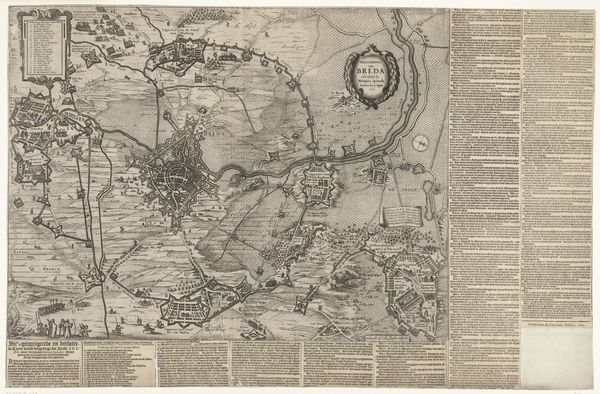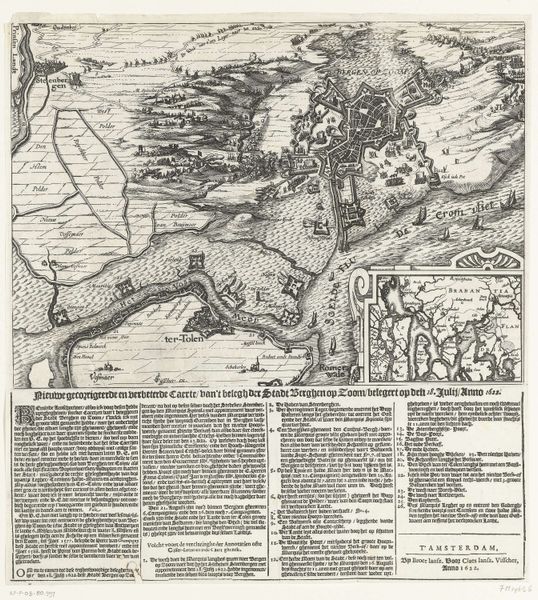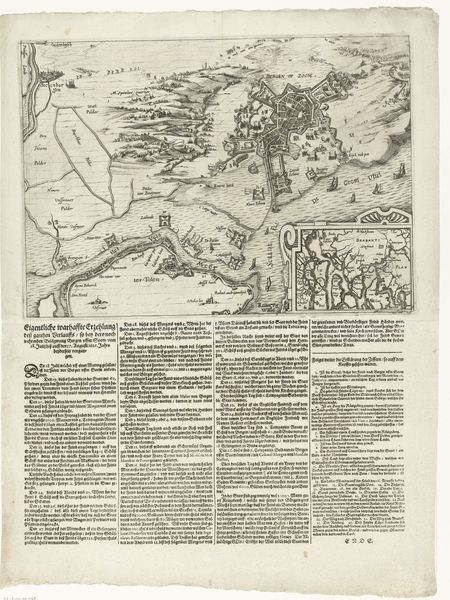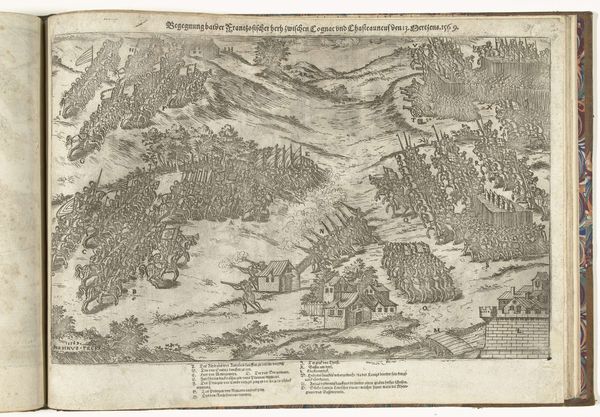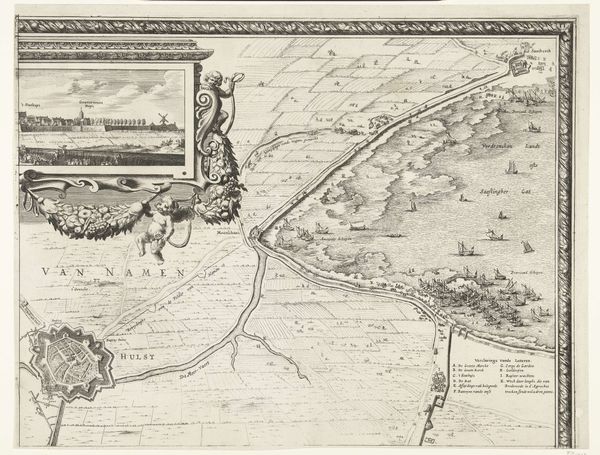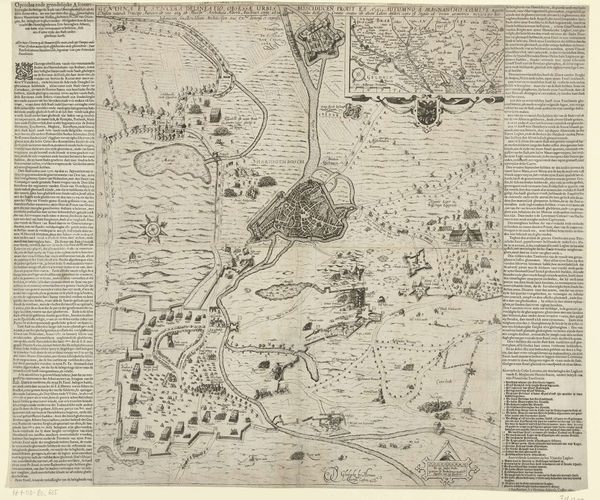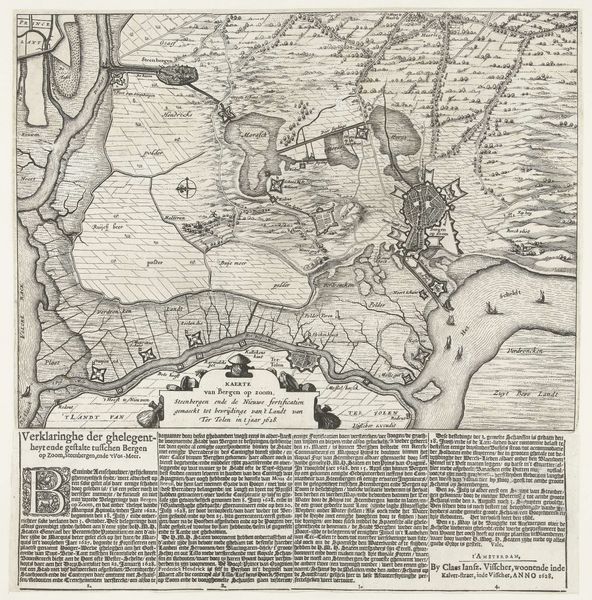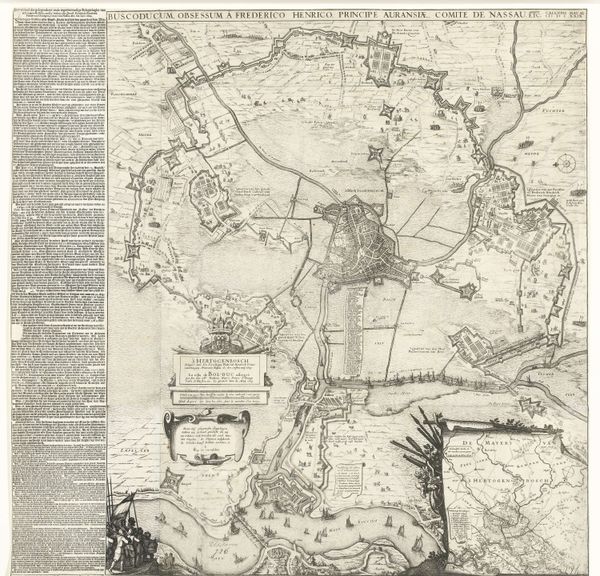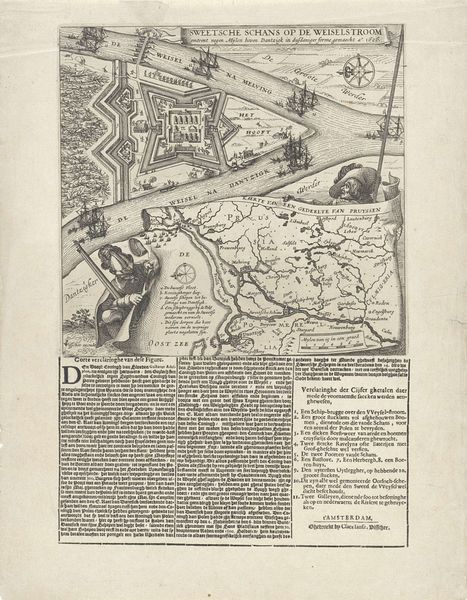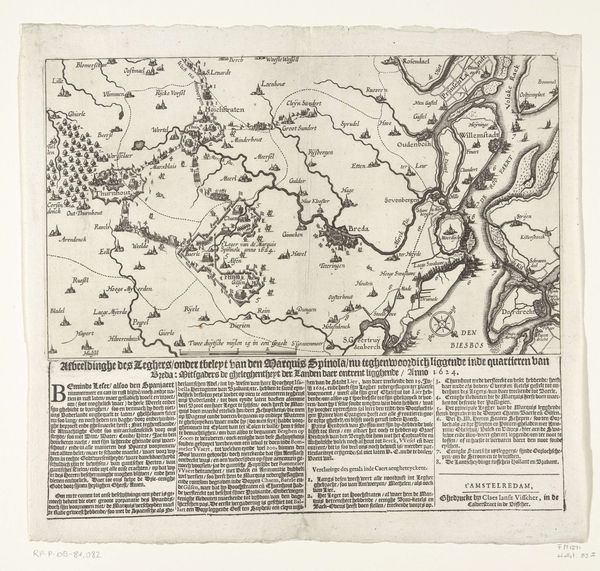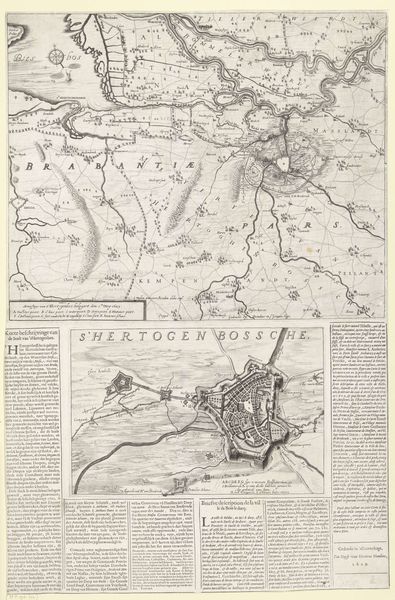
print, engraving
#
dutch-golden-age
# print
#
cityscape
#
engraving
Dimensions: height 585 mm, width 533 mm
Copyright: Rijks Museum: Open Domain
This print, made by Claes Jansz. Visscher around 1625, depicts the siege of Breda. It’s an etching, meaning that the design was first incised into a metal plate, likely copper, with a sharp tool, and then printed. Notice the incredible detail. The city itself is meticulously rendered, as are the surrounding fortifications and troop movements. This wasn’t just art; it was information, strategically disseminated to inform and influence public opinion about a key military event. The medium itself speaks to the rise of print culture, and with that, a whole new way of circulating knowledge and shaping perceptions. Etchings like this were relatively quick to produce and could be distributed widely, contributing to an emerging public sphere and the development of national identity. It’s a reminder that even images of war are shaped by the social and economic conditions of their making. Considering the history of materials and processes allows us to see the full meaning of this artwork.
Comments
No comments
Be the first to comment and join the conversation on the ultimate creative platform.

